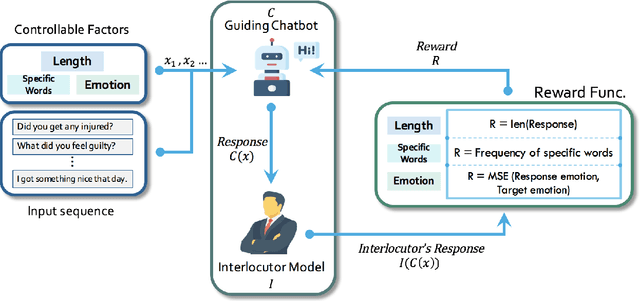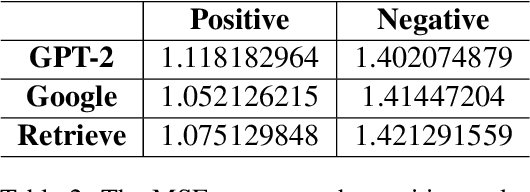Jiun-Hao Jhan
CheerBots: Chatbots toward Empathy and Emotionusing Reinforcement Learning
Oct 08, 2021



Abstract:Apart from the coherence and fluency of responses, an empathetic chatbot emphasizes more on people's feelings. By considering altruistic behaviors between human interaction, empathetic chatbots enable people to get a better interactive and supportive experience. This study presents a framework whereby several empathetic chatbots are based on understanding users' implied feelings and replying empathetically for multiple dialogue turns. We call these chatbots CheerBots. CheerBots can be retrieval-based or generative-based and were finetuned by deep reinforcement learning. To respond in an empathetic way, we develop a simulating agent, a Conceptual Human Model, as aids for CheerBots in training with considerations on changes in user's emotional states in the future to arouse sympathy. Finally, automatic metrics and human rating results demonstrate that CheerBots outperform other baseline chatbots and achieves reciprocal altruism. The code and the pre-trained models will be made available.
Put Chatbot into Its Interlocutor's Shoes: New Framework to Learn Chatbot Responding with Intention
Apr 23, 2021



Abstract:Most chatbot literature that focuses on improving the fluency and coherence of a chatbot, is dedicated to making chatbots more human-like. However, very little work delves into what really separates humans from chatbots -- humans intrinsically understand the effect their responses have on the interlocutor and often respond with an intention such as proposing an optimistic view to make the interlocutor feel better. This paper proposes an innovative framework to train chatbots to possess human-like intentions. Our framework includes a guiding chatbot and an interlocutor model that plays the role of humans. The guiding chatbot is assigned an intention and learns to induce the interlocutor to reply with responses matching the intention, for example, long responses, joyful responses, responses with specific words, etc. We examined our framework using three experimental setups and evaluated the guiding chatbot with four different metrics to demonstrate flexibility and performance advantages. Additionally, we performed trials with human interlocutors to substantiate the guiding chatbot's effectiveness in influencing the responses of humans to a certain extent. Code will be made available to the public.
 Add to Chrome
Add to Chrome Add to Firefox
Add to Firefox Add to Edge
Add to Edge